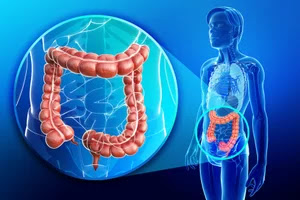Without knowing it, you may be encouraging neck pain by the way you perform everyday activities. How you carry yourself can invite neck pain or help keep it at bay. In general, try to keep your head balanced directly over your spine, so it is not leaning forward or cocked to one side. That's because your neck's principal job is to support your head, and your head weighs a lot—about 10 to 12 pounds.
Here are some hints from AMRI Hospitals consultants for achieving a healthy neck posture in common activities.
At the computer or desk
When working at your computer or at a desk, keep your head balanced directly over your spine as much as possible. That means setting your chair height so both your feet can rest on the ground, and sitting with your buttocks far back in your chair, using a small pillow to support your lower back if needed. Properly adjusting the keyboard and monitor may be difficult or impossible with a laptop, notebook, or tablet computer. You can plug in a separate, full-size keyboard to help you achieve better positioning. If that's not an option, placing your laptop or notebook computer on a desk of standard height and propping it to about a 12% incline (a one-inch book or ring binder should do the trick) keeps your head and neck in a healthier position. The downside is that it does place slightly more stress on your wrists.
No matter how perfect your office chair posture, it's important to get up and move around every half-hour, as prolonged sitting has been linked to worsening of neck pain and other health problems. If you tend to get lost in your work, program your computer to flash a reminder, or set an alarm on your smartphone. Stretching can help, too. Shrug your shoulders up and down or lean your head to each side while pulling the opposite shoulder down.
Telephone use
If you spend a lot of time on the phone, try to avoid leaning your head to one side. This is also important when you use a cellphone and aren't sitting at your desk while you speak. A headset, earbuds, or speakerphone are good options to help keep your head in a neutral position for hands-free talking. Headsets are available for both your desk phone and cellphone.
Reading at home
If you are sitting in a chair, try to maintain an upright posture. Hold the book so that you don't have to lean down or forward to see it. A pillow on your lap may help. If you must read in bed, sit up straight or use a specially designed wedge pillow. Or lie on your side with your neck straight and hold the book in front of you.
Here are some hints from AMRI Hospitals consultants for achieving a healthy neck posture in common activities.
At the computer or desk
When working at your computer or at a desk, keep your head balanced directly over your spine as much as possible. That means setting your chair height so both your feet can rest on the ground, and sitting with your buttocks far back in your chair, using a small pillow to support your lower back if needed. Properly adjusting the keyboard and monitor may be difficult or impossible with a laptop, notebook, or tablet computer. You can plug in a separate, full-size keyboard to help you achieve better positioning. If that's not an option, placing your laptop or notebook computer on a desk of standard height and propping it to about a 12% incline (a one-inch book or ring binder should do the trick) keeps your head and neck in a healthier position. The downside is that it does place slightly more stress on your wrists.
No matter how perfect your office chair posture, it's important to get up and move around every half-hour, as prolonged sitting has been linked to worsening of neck pain and other health problems. If you tend to get lost in your work, program your computer to flash a reminder, or set an alarm on your smartphone. Stretching can help, too. Shrug your shoulders up and down or lean your head to each side while pulling the opposite shoulder down.
Telephone use
If you spend a lot of time on the phone, try to avoid leaning your head to one side. This is also important when you use a cellphone and aren't sitting at your desk while you speak. A headset, earbuds, or speakerphone are good options to help keep your head in a neutral position for hands-free talking. Headsets are available for both your desk phone and cellphone.
Reading at home
If you are sitting in a chair, try to maintain an upright posture. Hold the book so that you don't have to lean down or forward to see it. A pillow on your lap may help. If you must read in bed, sit up straight or use a specially designed wedge pillow. Or lie on your side with your neck straight and hold the book in front of you.






















